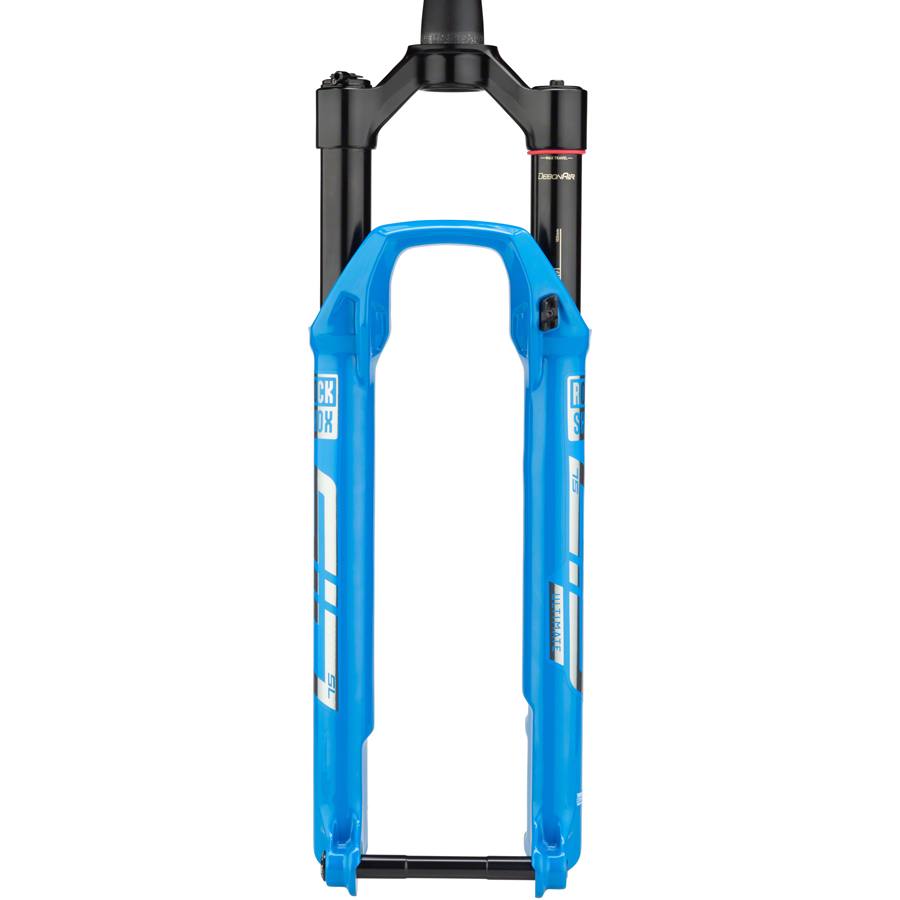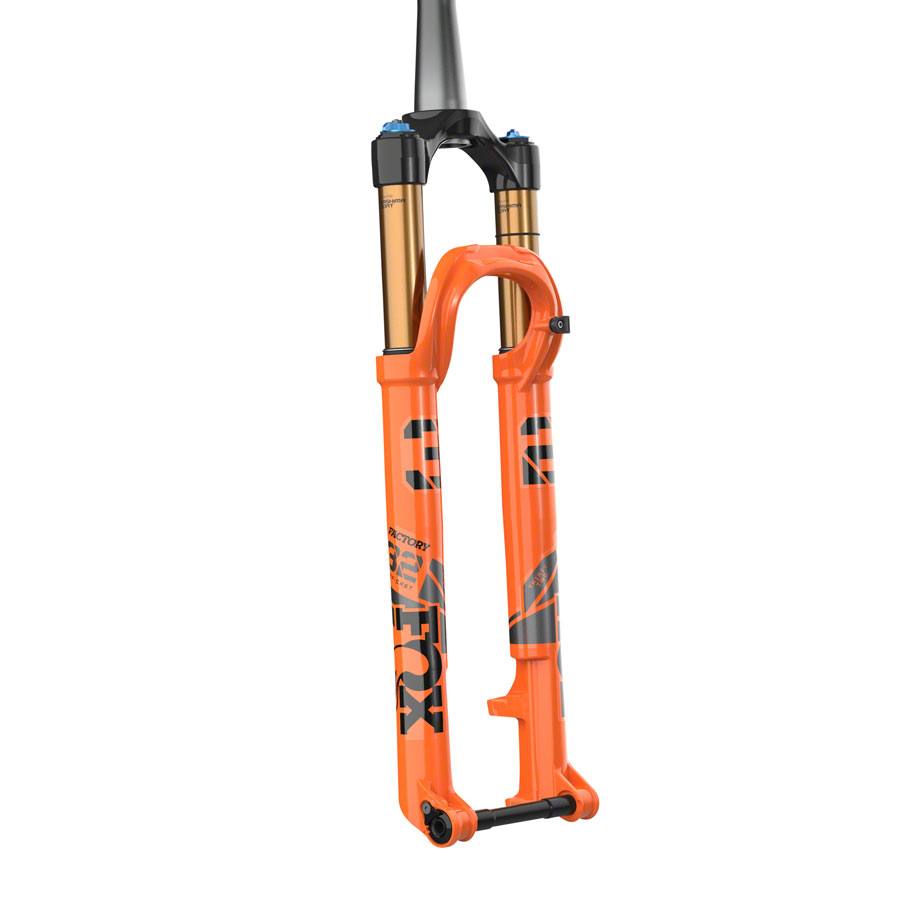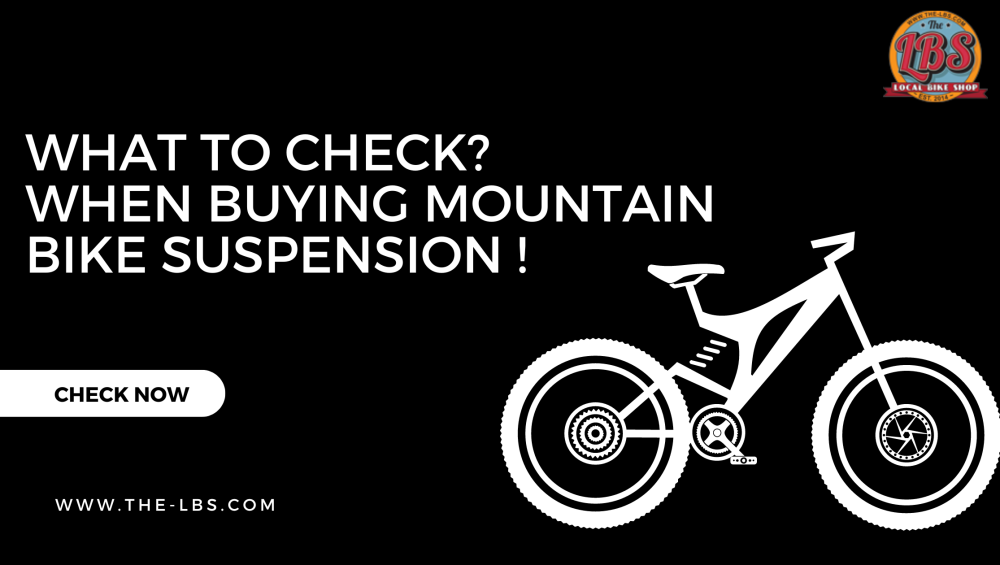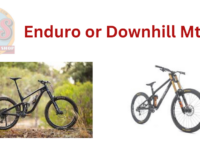Mountain bike suspension is a must mountain bike riding equipment required for exhilarating activity that takes riders off-road and onto rugged terrain. So without the proper equipment, this sport can be not only challenging but also dangerous. One crucial component of a mountain bike that can make all the difference is the mountain bike suspension system. Mountain bike suspension refers to the system of components that helps absorb shocks and vibrations encountered while riding on rough or uneven terrain. This system typically includes the front fork suspension and the rear shock absorber, and it can be found on both full suspension and front suspension mountain bikes.

The front fork suspension is located at the front of the bike and consists of two fork legs that attach to the bike frame and a suspension system located inside the fork legs. The suspension system typically consists of a spring, either coil or air, that compresses and rebounds to absorb shocks and vibrations from the terrain. This helps the rider maintain control of the bike and ride smoothly over rough terrain.
The rear shock absorber is located at the back of the bike and is usually mounted between the rear triangle and the frame. The shock absorber also consists of a spring and a damper, which work together to absorb shocks and vibrations. This helps ensure that the rider maintains contact with the ground, reducing the risk of accidents and injuries.
But why is mountain bike suspension so important?
Simply put, it makes the sport more enjoyable, safe, and accessible to riders of all skill levels. A well-functioning suspension system can reduce rider fatigue, increase control and stability, and allow riders to tackle more challenging terrain with confidence.
Full suspension mountain bikes, in particular, have revolutionized the sport by allowing riders to take on more technical terrain with greater ease. With both front and rear suspension, these bikes can absorb even the roughest of terrain, providing a smoother, more comfortable ride.
So, if you’re considering taking up mountain biking or upgrading your equipment, investing in a bike with a reliable suspension system is a must. Not only will it make the sport more enjoyable, but it will also improve your safety and help you push your limits.
Which Parts of a Mountain Bike Suspension Fork Should You Look Out For?
With so many different types of mountain bike suspension available, it can be overwhelming to know what to look out for when purchasing a new bike. Here are some key parts of a mountain bike suspension that you should pay attention to when shopping for a new bike.
- Swingarm Length: The length of the swingarm can affect how the bike handles and how it feels when riding. A longer swingarm can provide more stability and control, while a shorter swingarm can make the bike feel more agile and nimble. Be sure to consider the terrain you’ll be riding on and your personal riding style when choosing a swingarm length.
- Wheel Size Compatibility: Not all mountain bike suspension are compatible with every wheel size. Make sure that the suspension system you’re considering is compatible with the wheel size of the bike you’re interested in.
- Brake Mounts: The brake mounts on a mountain bike suspension are critical for ensuring that the brakes work effectively. Make sure that the brake mounts are compatible with the type of brakes you plan to use on your bike.
- Air Sprung Shock: The type of shock used in the rear suspension can make a big difference in the bike’s overall performance. An air sprung shock is lighter than a coil sprung shock, and it can be easily adjusted to provide a customized riding experience.
When shopping for a new mountain bike, it’s essential to take the time to research and consider the different components of the suspension system. By paying attention to details like swingarm length, wheel size compatibility, brake mounts, and air sprung shock, you can ensure that you’re investing in a bike that will provide the performance and comfort you need for your riding style and terrain.
We offer a range of mountain bikes with top-of-the-line suspension systems, including those with adjustable air sprung shocks, compatible brake mounts, and appropriate swingarm lengths for a variety of riding styles and preferences.
The quality of the product and the level of service we provide are also important to us. Make your purchase from our website today and experience the difference a high-quality suspension system can make in your mountain biking adventures.

Exploring Different Mountain Bike Suspension Forks Adjustment
If you’re looking to hit the trails and experience the thrill of mountain biking, one of the first decisions you’ll have to make is whether to go for a full-suspension or hardtail bike. Each type of bike has its own unique benefits and drawbacks, and it’s important to understand them before making your choice.
Full-suspension bikes have become increasingly popular in recent years, and for good reason. They offer a more comfortable ride, with suspension both in the front and rear of the bike. This means that when you hit a bump or a rough patch of terrain, the bike absorbs the shock and provides a smoother ride. Full-suspension bikes also offer better traction and control, as the suspension helps to keep the wheels in contact with the ground.
Another advantage of full-suspension bikes is that they are more forgiving on technical terrain. This means that if you make a mistake or hit a rock, the bike will be more forgiving and less likely to throw you off balance.
This can be especially helpful for beginners who are still learning the ins and outs of mountain biking.However, full-suspension bikes do have their drawbacks. They tend to be heavier than hardtail bikes, which can make them more difficult to handle on uphill climbs. They also require more maintenance, as there are more moving parts to take care of. Additionally, full-suspension bikes are typically more expensive than hardtail bikes, which can be a significant factor for those on a budget.
On the other hand, hardtail bikes offer their own advantages. They tend to be lighter and more efficient than full-suspension bikes, which can make them a better choice for long rides and races. Hardtail bikes also require less maintenance, as there are fewer moving parts to worry about. And because they don’t have rear suspension, hardtail bikes can be more responsive and better for technical climbs.However, there are also some drawbacks to hardtail bikes. Because they don’t have rear suspension, they can be less comfortable to ride on rough terrain. This can lead to more fatigue and discomfort, especially on longer rides.
Hardtail bikes also offer less traction and control than full-suspension bikes, which can make them more difficult to handle on technical terrain. As a result, there are advantages and disadvantages to both full-suspension and hardtail mountain bikes.
Full-suspension bikes offer better comfort, traction, and control, but are heavier, require more maintenance, and can be more expensive. Hardtail bikes, on the other hand, are lighter and more efficient, but offer less comfort and control. Ultimately, the choice comes down to your personal preferences and riding style. Whether you go for a full-suspension or hardtail bike, you’re sure to have an exciting and challenging mountain biking experience.
Comparing & Contrasting Available MTB Fork Features
Travel Distance MTB Fork Guide:
- Travel distance refers to the amount of suspension travel available in the fork.
- Shorter travel forks (80-120mm) are best suited for cross-country riding.
- Longer travel forks (120-200mm) are better for more aggressive trail riding and downhill riding.
- However, it’s important to note that longer travel doesn’t always mean better performance. The best travel distance for you will depend on your riding style and the type of terrain you ride on.
Adjustability Features for MTB Forks:
- Rebound adjustment knobs allow you to adjust how quickly the fork rebounds after compression. This can affect how the bike handles on rough terrain.
- Compression damping settings allow you to adjust how the fork compresses when hitting bumps. This can affect how the fork handles under braking and cornering.
- Lockout features allow you to lock the fork in place, which can be useful for uphill climbs or smooth terrain where suspension isn’t necessary.
- These adjustability features can make a big difference in the performance of your bike, but they also come at a higher cost.

Choosing the Right Suspension System Based on Your Riding Style & Budget
Best Budget Mountain Bike Forks:
- The RockShox 30 Silver TK is a popular choice for budget-friendly mountain bike forks. It offers 100mm of travel and has adjustable rebound and compression settings.
- The Suntour XCR Air is another good option for those on a budget. It offers 120mm of travel and has adjustable rebound and lockout features.
Best MTB Fork:
The Fox 36 Factory is often considered one of the best mountain bike forks on the market. It offers 160mm of travel and has a range of adjustability features, including high and low-speed compression, rebound, and lockout.
Factors to Consider When Purchasing a Mountain Bike with Suspension
Travel Range:
- As mentioned earlier, the travel range of the fork is an important consideration when purchasing a mountain bike with suspension.
- Think about the type of terrain you’ll be riding on and choose a travel range that suits your needs.
Rebound Adjustment Knobs:
- If you plan on riding technical terrain, look for a fork with adjustable rebound settings.
- This will allow you to fine-tune the fork’s response and improve your handling on rough terrain.
Compression Damping Settings:
- If you’re looking for a more aggressive riding style, consider a fork with adjustable compression damping settings.
- This will allow you to adjust how the fork handles under heavy braking and cornering.
The Different Types of Mountain Bike Suspensions and Their Benefits
A mountain bike that fits your riding style and preferences is crucial if you’re in the market for one. Any mountain bike’s suspension system is one of its most important components. When it comes to mountain bike suspensions, there are several types to consider.
Here at The Local Bike Shop, we have a wide selection of authentic mountain bikes with top-of-the-line suspension systems. The two primary types are hardtail mountain bikes and full-suspension mountain bikes. Hardtail mountain bikes have a suspension system in the front fork only, while full-suspension mountain bikes have suspension systems in both the front fork and the rear shock absorber.
Within the category of full-suspension mountain bikes, there are also different types of suspensions, including softail bike suspensions, 4-bar linkages, and single-pivot suspensions. Softail bike suspensions are known for their simplicity and low maintenance requirements, while 4-bar linkages offer improved traction and control on rough terrain. Single-pivot suspensions are also low maintenance and provide a balanced ride on a variety of terrain.Each type of suspension system has its unique benefits, and choosing the right one will depend on your riding style and the terrain you plan to tackle. At our website, we offer a range of mountain bikes with different suspension types to meet the needs of riders of all levels.
Not only do we offer a range of authentic mountain bikes with top-of-the-line suspension systems, but we also prioritize customer satisfaction. When you purchase a bike from us, we guarantee authenticity, a warranty, and exceptional customer service.With a range of suspension types to choose from, it’s essential to find a system that suits your riding style and terrain preferences. We offer authentic mountain bikes with top-of-the-line suspension systems and a commitment to customer satisfaction. Make your purchase from us today and experience the difference a high-quality suspension system can make in your mountain biking adventures.
Conclusion
When choosing a mountain bike with suspension, it’s important to consider your riding style and budget. Think about the travel range, adjustability features, and overall performance of the fork before making your purchase. By doing so, you’ll be able to find the right suspension system for your needs and enjoy a more comfortable and enjoyable ride.






